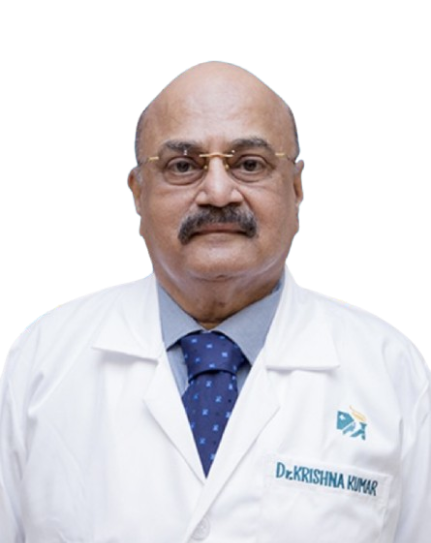Canalplasty - Indications, Procedure Purpose, Recovery Time

Treatment Duration
30 Minutes
------ To ------60 Minutes
Treatment Cost
₹ 35,000
------ To ------₹ 1,00,000

Table of Contents
- What is Canalplasty?
- Conditions treated with Canalplasty
- Who needs Canalplasty?
- How is Canalplasty Procedure performed?
- What to expect Before and On the day of Canalplasty Procedure?
- What to expect after the Canalplasty Procedure?
- Benefits of Canalplasty Procedure
- Risks and Complications of Canalplasty Procedure
- Risks of Delayed Canalplasty Procedure
- Cost of Canalplasty Procedure
Canalplasty is one of the most common ear surgeries for treating ear disorders. It is a procedure that reshapes and reconstructs the ear canal to improve drainage and reduce blockages. According to the American Academy of Otolaryngology, canalplasty can treat various disorders, including chronic ear infections, narrowed or blocked ear canals, and chronic ear discharge.
Canalplasty ear surgery can help improve hearing in cases where the patient experiences blocked-up sound due to a narrowed ear canal or other structural abnormality. It is typically performed under general anaesthesia and can be done as an outpatient procedure.
| Surgery Name | Canalplasty |
|
Alternative Name |
Atresia Repair |
|
Disease Treated |
Chronic ear infections, Hearing loss, Eustachian tube dysfunction, Congenital abnormalities, Chronic ear drainage, Ear canal stenosis, Tumours in the ear canal, Ear trauma, Cholesteatoma |
|
Benefits of the Surgery |
Minimally Invasive, Improves quality of life, Short recovery time, Lesser Complications, Reduces ear inflammation, Restores balance. |
|
Treated By |
Otolaryngologist |
You can check Canalplasty Cost here.
What is Canalplasty?
Canalplasty is a surgical procedure to enlarge the ear canal and improve hearing. It involves making an incision in the skin of the ear canal, removing part of the bone at the entrance to make it more comprehensive, and reconstructing the surrounding tissue. This procedure aims to reduce blockages and improve sound conduction from the outer to the inner ear.
Anatomy and Physiology of the Ear
- The ear is a complex organ responsible for both hearing and balance. The outer ear consists of the pinna, which collects sound waves and funnels them into the ear canal. The ear canal ends at the eardrum, a thin piece of tissue that vibrates when sound waves strike.
- Behind the eardrum are three small bones (the malleus, incus, and stapes) that transmit vibrations from the eardrum to the inner ear. The inner ear contains the cochlea, a snail-shaped structure filled with fluid that converts vibrations into nerve impulses.
- These nerve impulses travel through the brain, where they are interpreted as sound.
- The inner ear also contains the vestibular system, which helps to maintain balance. This system includes two organs: the utricle and saccule, which detect changes in position, and the semicircular canals, which detect head movement.
Expert Doctors (10)
NABH Accredited Hospitals (10)


Conditions treated with Canalplasty
Canalplasty is performed to treat various ear, nose, and throat (ENT) conditions, including:
- Ear infections
- Hearing loss caused by a narrow ear canal
- Eustachian tube dysfunction
- Congenital abnormalities (malformations present at birth)
- Chronic ear drainage or excessive wax buildup
- Ear canal stenosis
- Tumors in the ear canal
- Ear trauma resulting in scar tissue
- Chronic swelling of the ear canal, known as otitis external
- Cholesteatoma (a growth that forms in the middle ear)
In addition to treating ear, nose, and throat conditions, Canalplasty can also be used for cosmetic purposes. It is commonly used to reshape the outer ear (pinna) to correct deformities caused by trauma or congenital malformations.
Who needs Canalplasty?
Canalplasty has emerged as an effective treatment to improve hearing and reduce symptoms caused by chronic otitis media with effusion or ear infections. However, before opting for the surgery, it is essential to understand who is suitable to undergo the procedure. The eligible candidates for the canalplasty procedure are:
- Those with persistent hearing loss due to fluid buildup in the middle ear.
- Those who have recurrent ear infections or otitis media with effusion.
- People who are not responding well to medical treatments like antibiotics or steroid medications.
- Those with persistent hearing loss due to structural abnormalities in the ear canal.
Who is not the right candidate for Canalplasty?
- Children who have not reached puberty
- People with certain medical conditions, such as perforated eardrums
- Those with allergies causing swollen ear canals may not be suitable for the procedure
Therefore, it is essential to consult a doctor to determine if one needs to undergo a canalplasty procedure.
How is Canalplasty Procedure performed?
Canalplasty ear is a surgical procedure performed to enlarge the ear canal to improve an individual's hearing ability. The procedure may take from 30 minutes to an hour to complete depending on the patient's age, comorbidities of the patient and complexity of the condition. This procedure is performed by an otolaryngologist, along with other professional medical staff.
However, the following are the general steps involved during canalplasty:
- The patient will be placed with the ear in a neutral position.
- The doctor will use a thin tube with a camera to see the ear canal and identify the area that needs to be treated.
- The doctor will administer anaesthesia to ensure the patient is completely unconscious during the procedure.
- The doctor will then check the patient's vitals, such as heart rate, oxygen concentration, etc.
- Once the patient’s condition is stable, the surgeon will make an incision in the skin of the external ear to allow access to the cartilage.
- The surgeon will remove any overgrowth or blockages in the cartilage before reshaping the canal. This reshaping may involve widening, straightening, or lengthening the ear canal, depending on the individual's needs and preferences.
- Small absorbent tubes may be placed in the ear to help drainage.
- Once the new shape is achieved, the incision is closed with sutures, and sterile gauze and a bandage are applied to protect it from infection.
What to expect Before and On the day of Canalplasty Procedure?
The patient can generally go back home the same day after the canalplasty, as this procedure is generally performed as an outpatient procedure. To prepare for the day of surgery, the patient must consider the following things:
Before Canalplasty Procedure
Before undergoing the canalplasty ear procedure, the following things would be done:
- The patient must get a physical exam from the doctor to ensure that the patient is in good health for the surgery.
- The patient must talk to the doctor about any potential lifestyle modifications they may need to make before and after surgery, such as quitting smoking or changing their diet.
- The patient must ask the doctor if taking blood thinners is safe before the surgery.
- The patient must avoid the consumption of aspirin, ibuprofen, and other anti-inflammatory and non-steroidal drugs at least two weeks before the surgery.
- The patient must discuss the pain management plan after the surgery with the doctor.
- The patient must be sure to get enough rest and hydrate adequately.
- If the patient has any medical conditions, they must inform the doctor beforehand so that the doctor can adjust the dosage of anaesthesia accordingly.
On the day of Canalplasty Procedure
- The patient should reach the hospital before the scheduled surgery time.
- The patient will be asked to sign the consent form before the surgery.
- Avoid eating or drinking anything post-midnight the day before surgery.
- Take a shower and wash the hair with an antiseptic shampoo.
- Not wear any jewellery, makeup, or nail polish on the day of the surgery.
- Remove all piercings and contact lenses before surgery.
- Wear loose, comfortable clothing to the hospital on the day of the procedure.
- Bring a list of medications they are taking, including vitamins and supplements.
- Make sure that someone is available to drive them home after the procedure.
- Ask the doctor about the procedure and what to expect afterwards.
What to expect after the Canalplasty Procedure?
The recovery process for canalplasty ear surgery can vary from patient to patient but typically includes the following:
The Recovery process at the Hospital
- The staff will shift the patient to the recovery room after the surgery. The patient may feel sleepy or dizzy for the first few hours, and the noise they hear may seem louder than usual.
- The patient will be kept in observation until the after-effect of anaesthesia wears off.
- In case the procedure is performed after afternoon, the patient can be asked to stay for the night.
- The doctor may prescribe antibiotics and other ear drops to the patient to prevent ear infections and manage pain.
- The patient is discharged from the hospital after the doctor checks and ensures the patient is fit for discharge.
- The doctor gives instructions for care at home.
- The recovery time will vary depending on the individual; some patients may experience ear discomfort for several days or weeks following surgery.
Recovery process/expectation after hospital discharge
Follow all the doctor's instructions for post-operative care. The patient must:
- Rest and avoid strenuous activities for six weeks following the surgery.
- Take medications such as antibiotics or pain relievers as prescribed by the doctor.
- Wear hearing protection and protective headgear while engaging in high-risk activities such as contact sports and watersports or loud environments, such as concerts or nightclubs.
- Apply ice packs, as they will help reduce any swelling and pain.
- Use sunscreen, hats, and other protective wear to prevent sun damage to the ear canal.
- Avoid using earbuds or earplugs or listening to loud sounds.
- Avoid swimming or submerging the ear in water until it has healed.
- Avoid going to crowdy places until the doctor gives clear instructions.
- Attending follow-up appointments with the doctor to ensure proper recovery.
First Follow-up Appointment
- The first follow-up appointment would be scheduled one to two weeks after the canalplasty ear surgery.
- The doctor will assess the healing process during this appointment and provide instructions for future care.
- The ENT specialist might also change the medication or advise the patient to continue with the previous medication for some more time, depending on the condition and recovery of the surgical area.
- Afterwards, they will have regular checks with the doctor every few months.
The patient can ask the following questions to the doctor:
- How soon can I resume physical activity?
- When can I return to work?
- What types of activities should I avoid during recovery?
- Should I use any medications or topical treatments during the healing process?
- Are there any signs or symptoms indicating a complication, and if so, what should I do?
Benefits of Canalplasty Procedure
- It is minimally invasive and does not require any incisions. This means there is less risk of infection and scarring than in other types of ear surgeries.
- The recovery time for canalplasty surgery is usually short, and the risk of complications is shallow.
- Canalplasty surgery can help improve a person's quality of life by addressing bothersome ear symptoms, such as
- Hearing loss
- Ringing in the ear (tinnitus)
- Reduce recurrent effusions
- Middle ear pressure
- In some cases, canalplasty may restore a person's sense of balance, which can be affected by chronic hearing loss or tinnitus.
- Canalplasty has been proven to reduce inflammation and improve ear hygiene. This can help reduce the risk of infection and ear canal irritation.
Risks and Complications of Canalplasty Procedure
Canalplasty surgery is an effective method to treat chronic ear infections and other hearing-related complications. However, as with any surgery, canalplasty ear surgery has certain risks and complications.
- Bleeding: Even though bleeding is rare, it can happen during the surgery. If this happens, additional medications may be required to stop the bleeding.
- Infection: The surgical area can become infected due to bacteria or other microorganisms entering the site. An antibiotic course may be prescribed to deal with this issue.
- Temporary Hearing Loss: Sometimes, the hearing may be reduced for a few days after the surgery. This is usually temporary and will fade away within a few weeks.
- Nerve damage: Canalplasty surgery could lead to nerve damage, which can affect the ability of the ear to process sound normally.
- Persistent hearing loss: In rare cases, canalplasty surgery may fail or worsen the hearing problem instead of improving it. This is why discussing potential risks with the doctor before proceeding with the surgery is important.
- Dizziness: Dizziness is another possible complication after this type of surgery. This usually resolves on its own. However, one should consult the doctor if it persists for more than a few days.
It's important to note that these risks and complications are rare, and most people who undergo canalplasty ear surgery experience minimal side effects.
Risks of Delayed Canalplasty Procedure
Canalplasty is a well-established procedure that can provide long-term relief from hearing-related difficulties for those suffering from Eustachian tube dysfunction. While the procedure is generally safe, there are risks associated with delaying or avoiding the procedure altogether. It can lead to:
- Hearing loss
- Ringing in the ear (tinnitus)
- Chronic ear infections
- Permanent damage to eardrum
Other auditory damage due to long-term pressure buildup in the inner ear.
Cost of Canalplasty Procedure
Canalplasty is a relatively new and revolutionary technique that the FDA approved in 2017. It is deemed to be the most effective treatment for chronic ear infections. It is often recommended as a preferred treatment option in cases where other treatment methods have been unsuccessful.
The cost of canalplasty in India can vary substantially depending on the complexity of the procedure and the hospital or clinic where it is being performed. The cost typically ranges from Rs. 35,000 - 1,00,000, depending on the complexity of the procedure and the type of treatment needed. In some cases, the procedure may be covered by insurance companies, but most of the time, it is not.
It is important to note that canalplasty is not a quick fix for chronic ear infections and may require multiple sessions to achieve desired results.
| Procedure Name | Cost Value |
| Canalplasty | Rs.35,000 - Rs.1,00,000 |
Frequently Asked Questions (FAQ)
What is canalplasty surgery of the ear?
Canalplasty surgery is a procedure to correct a narrow or blocked ear canal. The goal of the surgery is to widen the canal and improve hearing.
How is a canalplasty performed?
How long does ear canal surgery take?
Ear canal surgery is a fairly quick and usually takes less than an hour.
Can you fix a narrow ear canal?
There are different ways to fix a narrow ear canal. One way is to get a surgery called an ear canalplasty. This surgery will make the ear canal larger to enhance hearing and reduce the chance of infection. Another way is to use a hearing aid that fits into the ear canal. This will help amplify sound and make it easier to hear.
What happens if you have small ear canals?
If you have small ear canals, it may be difficult to clean them properly, and you may be more susceptible to ear infections.
Can a narrow ear canal cause problems?
A narrow ear canal can cause problems because it can make it difficult for sound to travel through the canal to the eardrum. This can lead to hearing loss.
How do you massage ear wax out?
There are different ways to massage ear wax. You can use a warm, wet washcloth. Put the washcloth over your ear and let it sit to soften the wax. Then, gently massage the area in a circular motion with your finger. Another way is to use an ear syringe. Fill up the syringe with warm water and squirt it into your ear. Let the water sit, then tilt your head to drain out. Again, gently massage the area in a circular motion with your finger to help loosen the wax.
Do ear canals narrow with age?
There is no definitive answer, as everyone experiences different body changes as they age. However, ear canals may narrow with age due to the natural ageing process.
When is ear surgery needed?
There are several reasons one need a ear surgery, but the most common reason is improving hearing. Other reasons for ear surgery can include correcting birth defects, treating an infection, or relieving pressure from a buildup of fluid in the ear.
Can narrow ear canals cause tinnitus?
Why are my ear canals always itchy?
Itchy ear canals have many potential causes, including skin conditions like eczema, allergies, and fungal infections. If the itchiness is accompanied by symptoms like pain, discharge, or redness, it may indicate a more severe problem, and you should see a doctor.
What is the narrowing of the ear canal called?
The narrowing of the ear canal is called stenosis.
How is ossicular chain reconstruction done?
One common method of ossicular chain reconstruction is known as the Dissociative Method. This technique involves detaching the incus from the stapes and then reattaching it to the stapes using a tiny titanium wire.
How much does a canalplasty surgery cost in India?
A canalplasty surgery in India typically costs between ₹35,000 to ₹1,10,000.
What happens if the mastoid bone is removed?
If the mastoid bone is removed, the middle ear bones are no longer anchored to the skull. This can lead to problems with hearing and balance.
How long does ear surgery take to recover?
The length of time for ear surgery recovery depends on the type of surgery. For example, a myringoplasty (eardrum repair) takes about six weeks to recover, while an ossiculoplasty (bone conduction hearing device) can take up to three months.
Last Updated on: 12 December 2022
Author
HexaHealth Care Team
HexaHealth Care Team brings you medical content covering many important conditions, procedures falling under different medical specialities. The content published is thoroughly reviewed by our panel of qualified doctors for its accuracy and relevance.






















